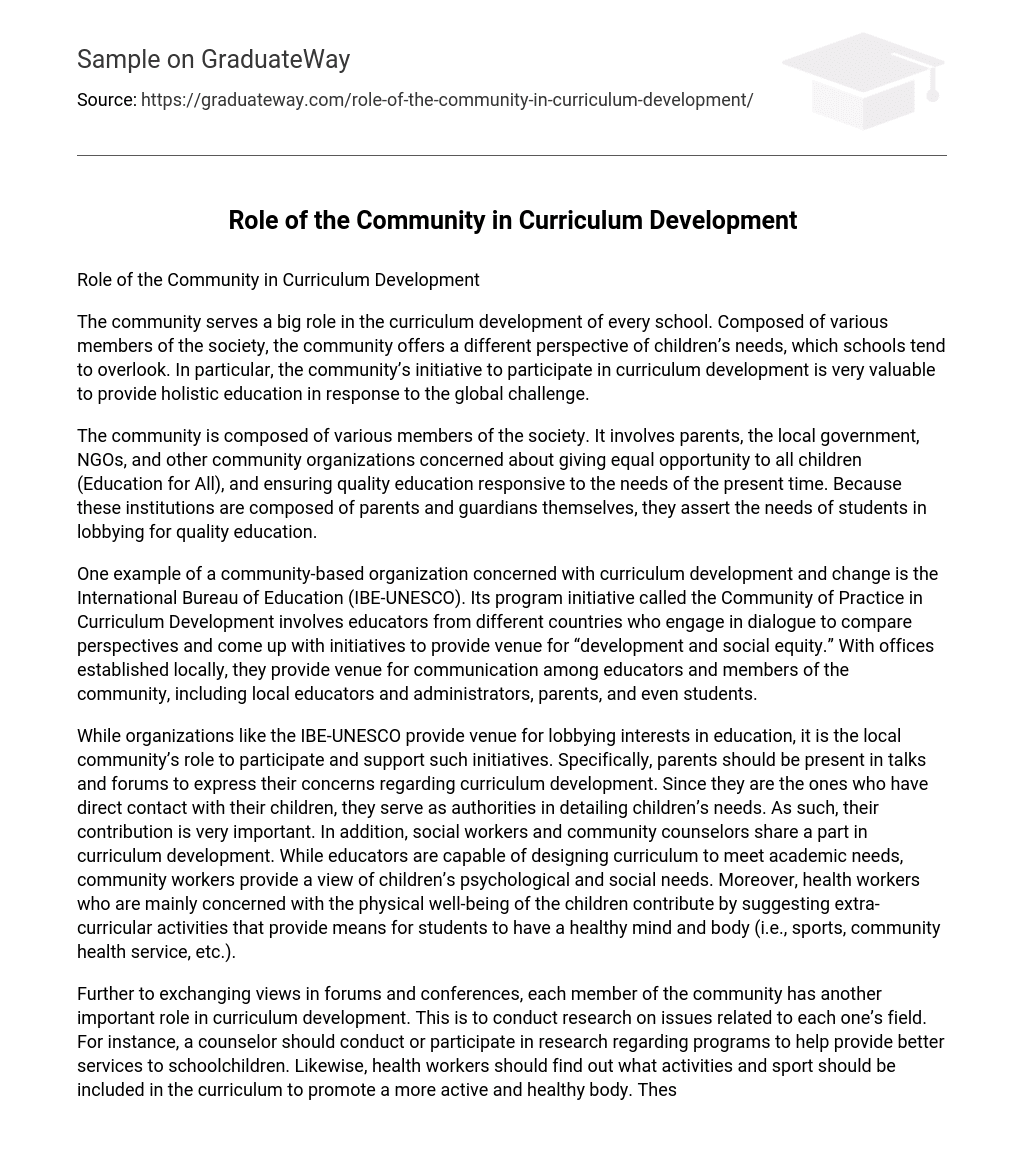The community serves a big role in the curriculum development of every school. Composed of various members of the society, the community offers a different perspective of children’s needs, which schools tend to overlook. In particular, the community’s initiative to participate in curriculum development is very valuable to provide holistic education in response to the global challenge.
The community is composed of various members of the society. It involves parents, the local government, NGOs, and other community organizations concerned about giving equal opportunity to all children (Education for All), and ensuring quality education responsive to the needs of the present time. Because these institutions are composed of parents and guardians themselves, they assert the needs of students in lobbying for quality education.
One example of a community-based organization concerned with curriculum development and change is the International Bureau of Education (IBE-UNESCO). Its program initiative called the Community of Practice in Curriculum Development involves educators from different countries who engage in dialogue to compare perspectives and come up with initiatives to provide venue for “development and social equity.” With offices established locally, they provide venue for communication among educators and members of the community, including local educators and administrators, parents, and even students.
While organizations like the IBE-UNESCO provide venue for lobbying interests in education, it is the local community’s role to participate and support such initiatives. Specifically, parents should be present in talks and forums to express their concerns regarding curriculum development. Since they are the ones who have direct contact with their children, they serve as authorities in detailing children’s needs. As such, their contribution is very important. In addition, social workers and community counselors share a part in curriculum development. While educators are capable of designing curriculum to meet academic needs, community workers provide a view of children’s psychological and social needs. Moreover, health workers who are mainly concerned with the physical well-being of the children contribute by suggesting extra-curricular activities that provide means for students to have a healthy mind and body (i.e., sports, community health service, etc.).
Further to exchanging views in forums and conferences, each member of the community has another important role in curriculum development. This is to conduct research on issues related to each one’s field. For instance, a counselor should conduct or participate in research regarding programs to help provide better services to schoolchildren. Likewise, health workers should find out what activities and sport should be included in the curriculum to promote a more active and healthy body. These studies may help educators design a better curriculum responsive to the needs of children.
Reference
International bureau of education. Retrieved December 22, 2008, from http://www.ibe.unesco.org/fileadmin/user_upload/COPs/News_documents/2007/0709BuenosAires/details.pdf





